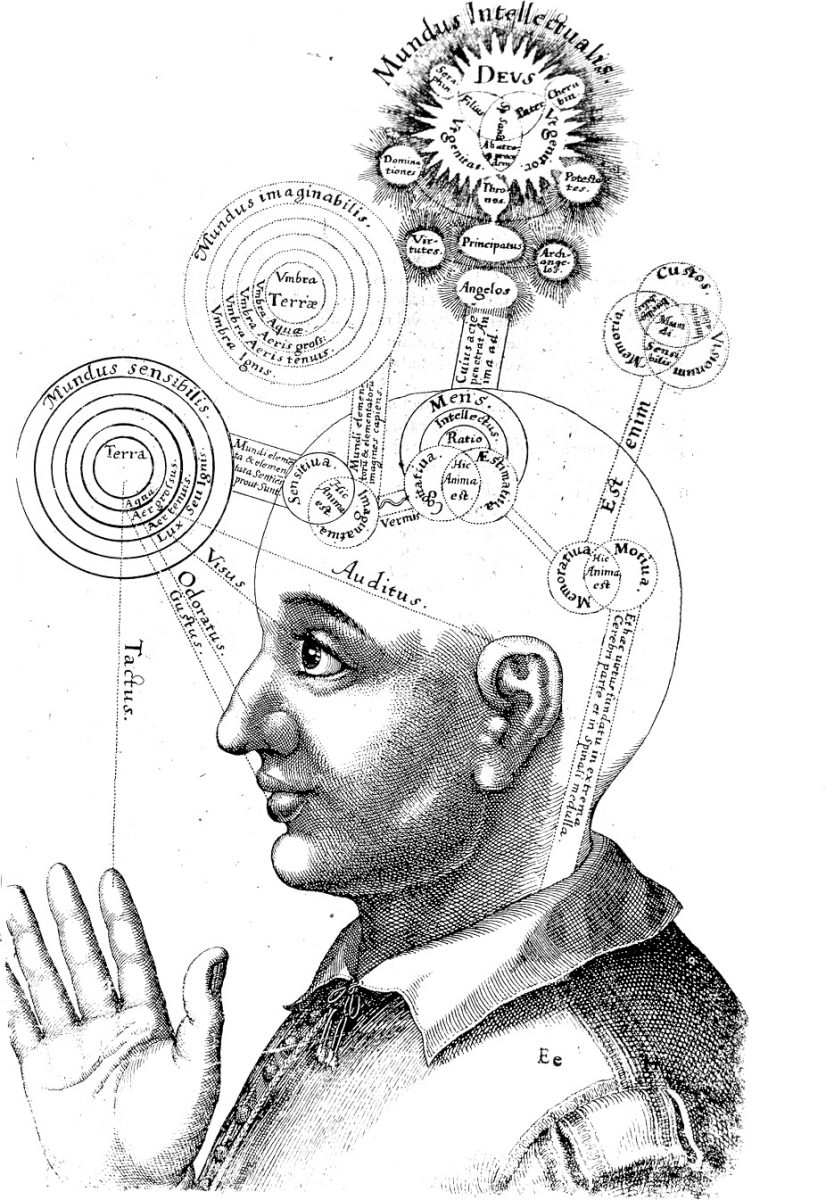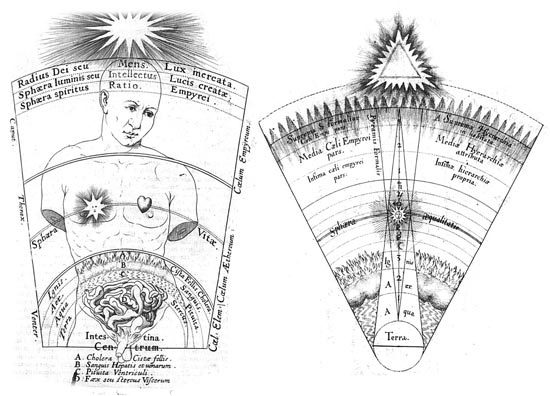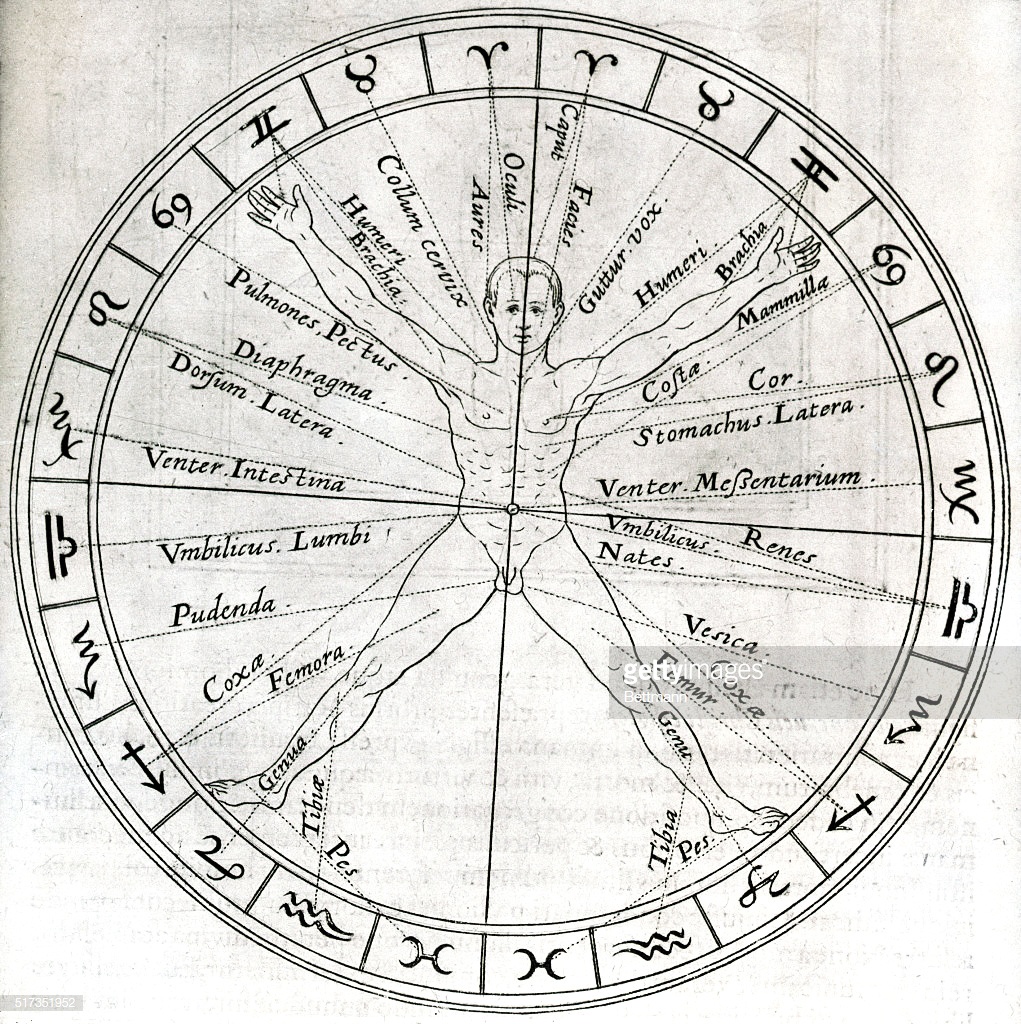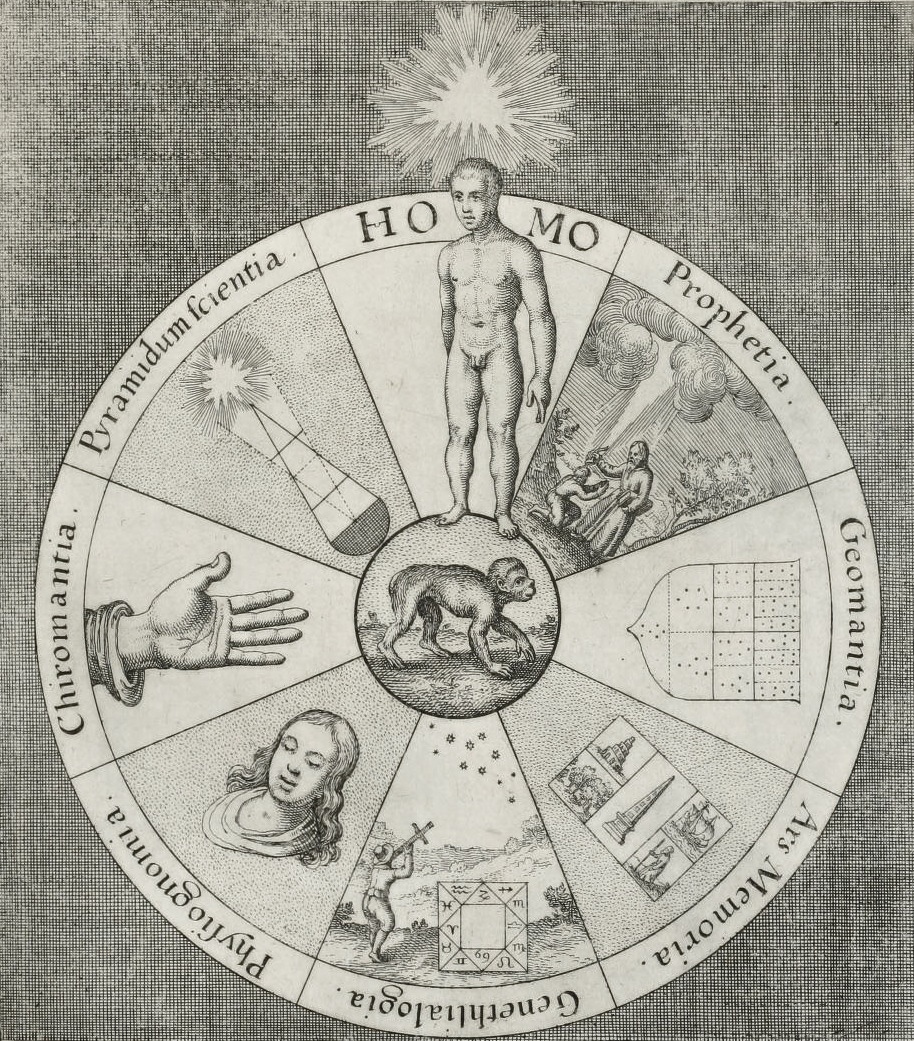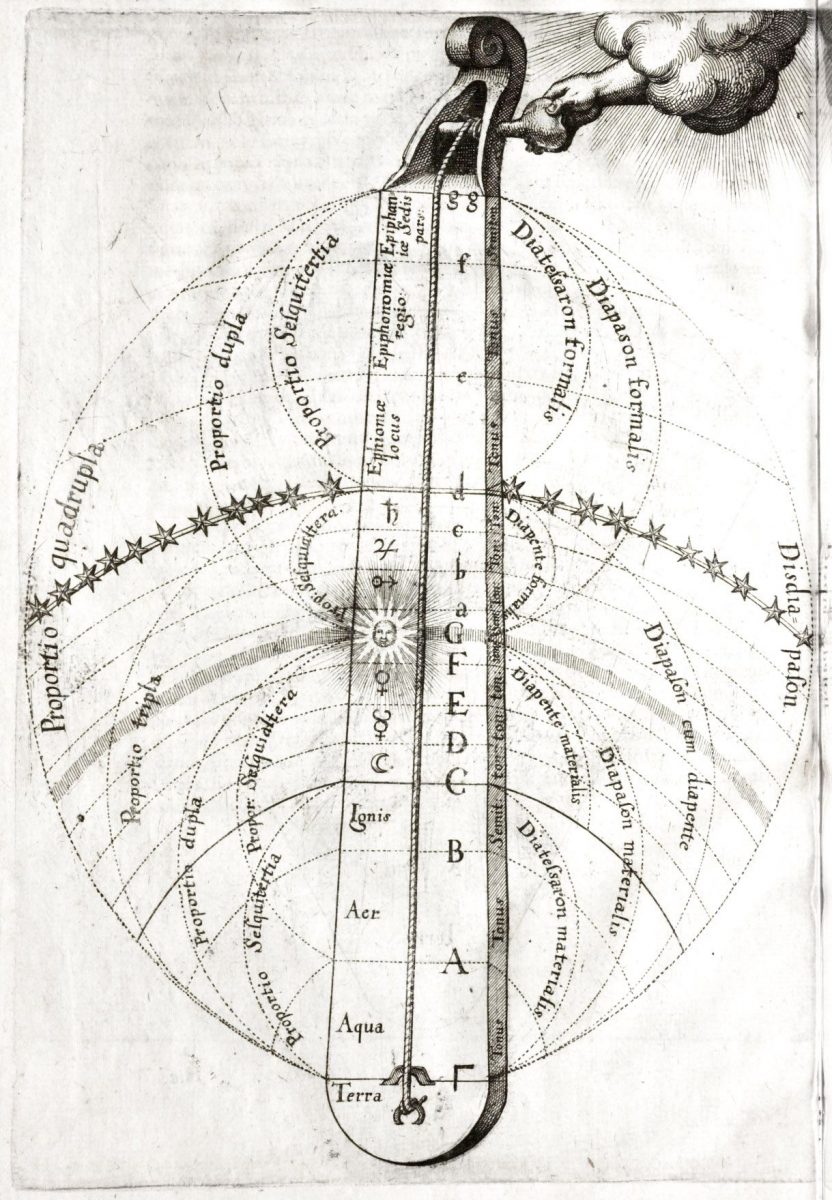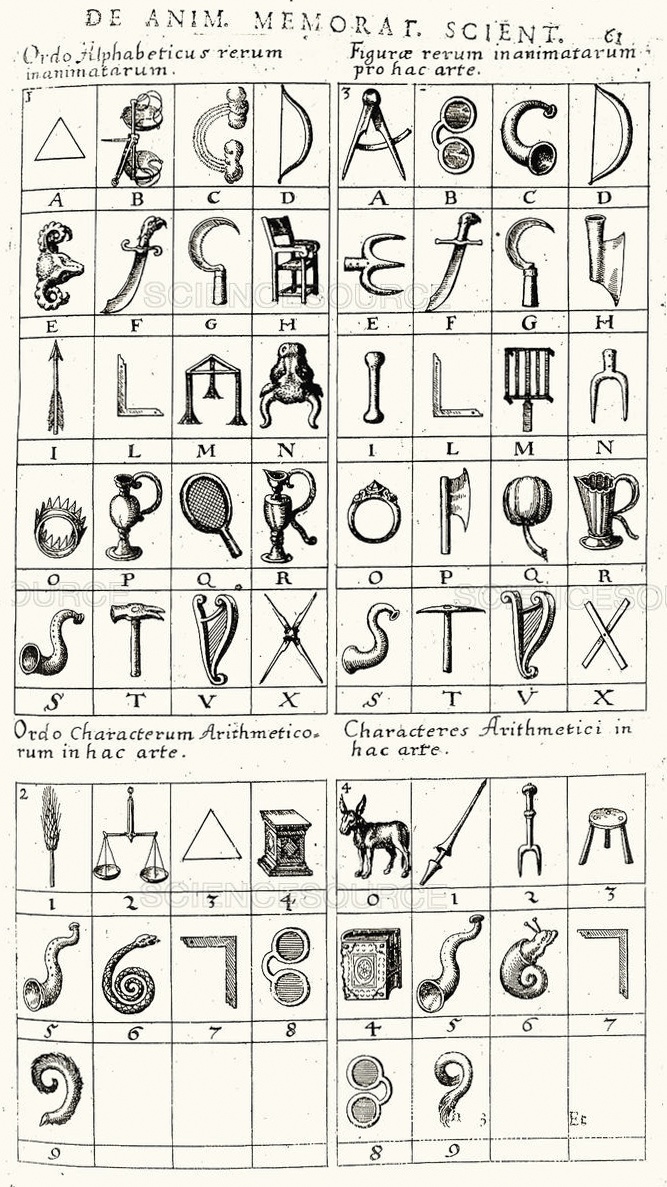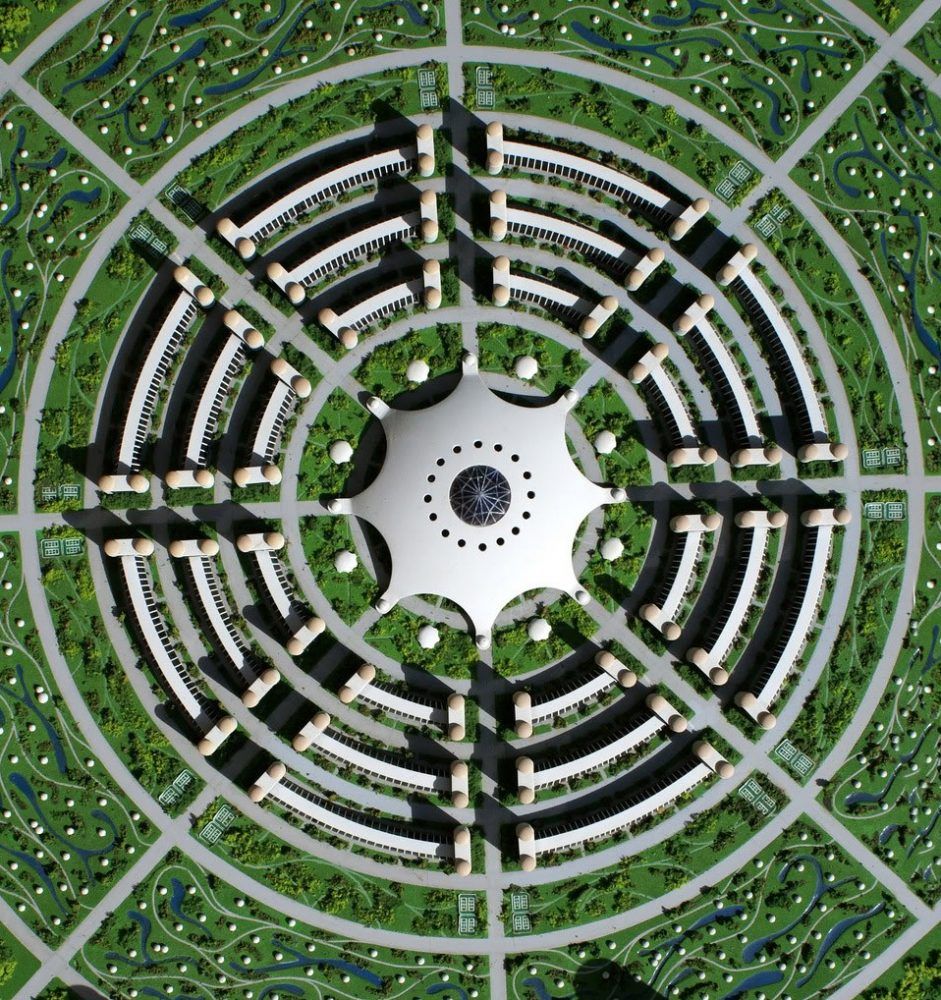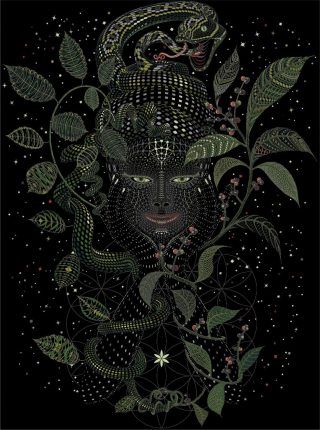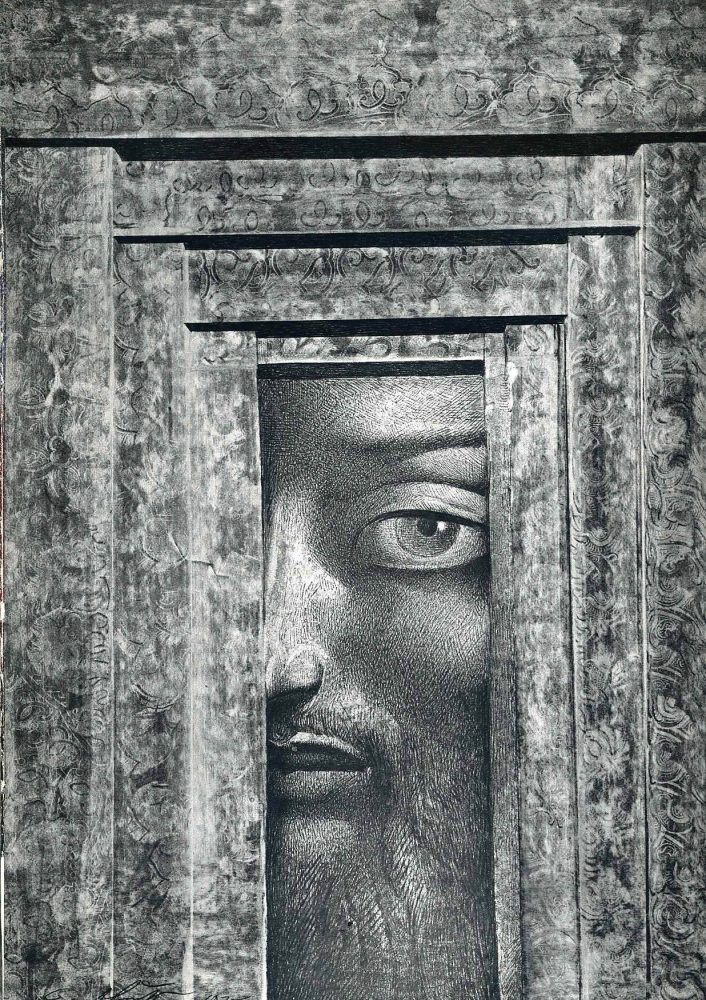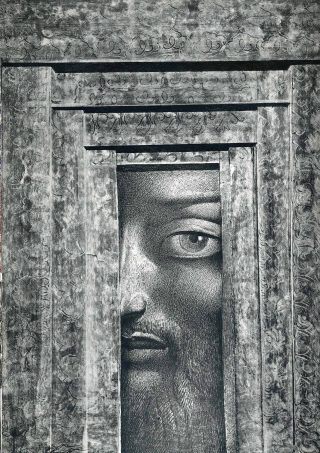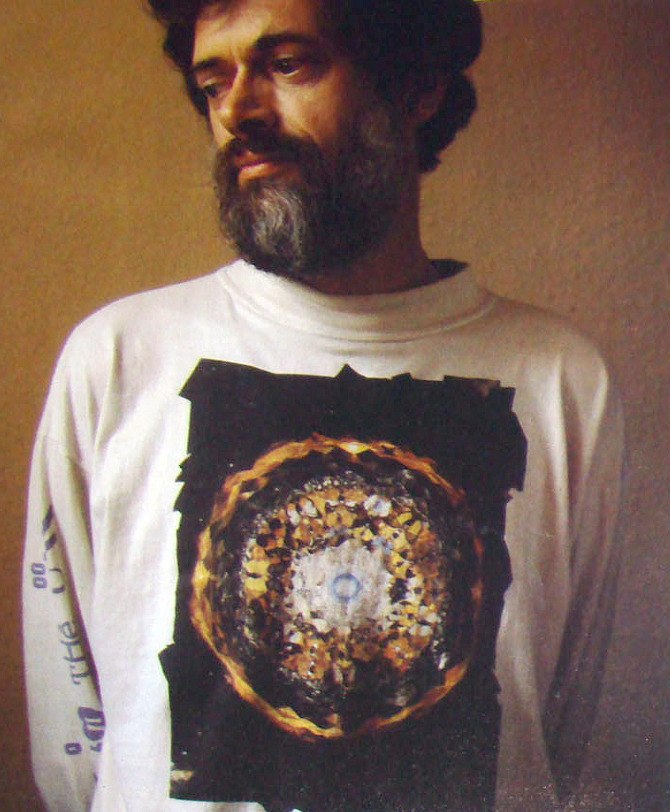- Illustration of man as the microcosm within the universal macrocosm
Robert Fludd (1574—1637) was a prominent English Paracelsian physician but is best known for his compilations in occult philosophy. He had a celebrated exchange of views with Johannes Kepler concerning the scientific and hermetic approaches to knowledge.
The significance of Fludd’s work lies in his striving for a universal science, combining mysticism, aesthetics and the more rational sciences to an all-embracing system of knowledge. True to the Hermetic concept as above, so below, the perennial equivalence of macrocosm and microcosm.
Although Fludd wouldn’t make history in the fields of astronomy, mechanics, philosophy, medicine or the arts, his works were kept alive in the libraries of the bibliophiles, sometimes rather out of curiosity than approval. His dominant ideas circle around the pyramids of spirit and matter, the monochord, the weather-glass, his theory of winds, geomancy, or the alchemical experiment with wheat just to name a few. Each of these themes generated studies of the length of a book. The reader can grasp the fundamental meaning immediately from the illustrations, as Fludd himself admitted when he criticized the prolix nature of Kepler’s texts: “What he has expressed with abundant words and lengthy analyzes, I have compressed into a few sentences and I have explained it by means of hieroglyphics and particularly eloquent figures.”
Whether you find his hermetic endeavor valid or not, Fludd’s captivating imagery can inspire an awareness of much that has been lost to modernity.
- Robert Fludd, aka Robertus de Fluctibus
I want to add this hour-long video as an introduction to the fundamental teachings of ancient Alchemy and Hermeticism:
Alchemy — Sacred Secrets Revealed




